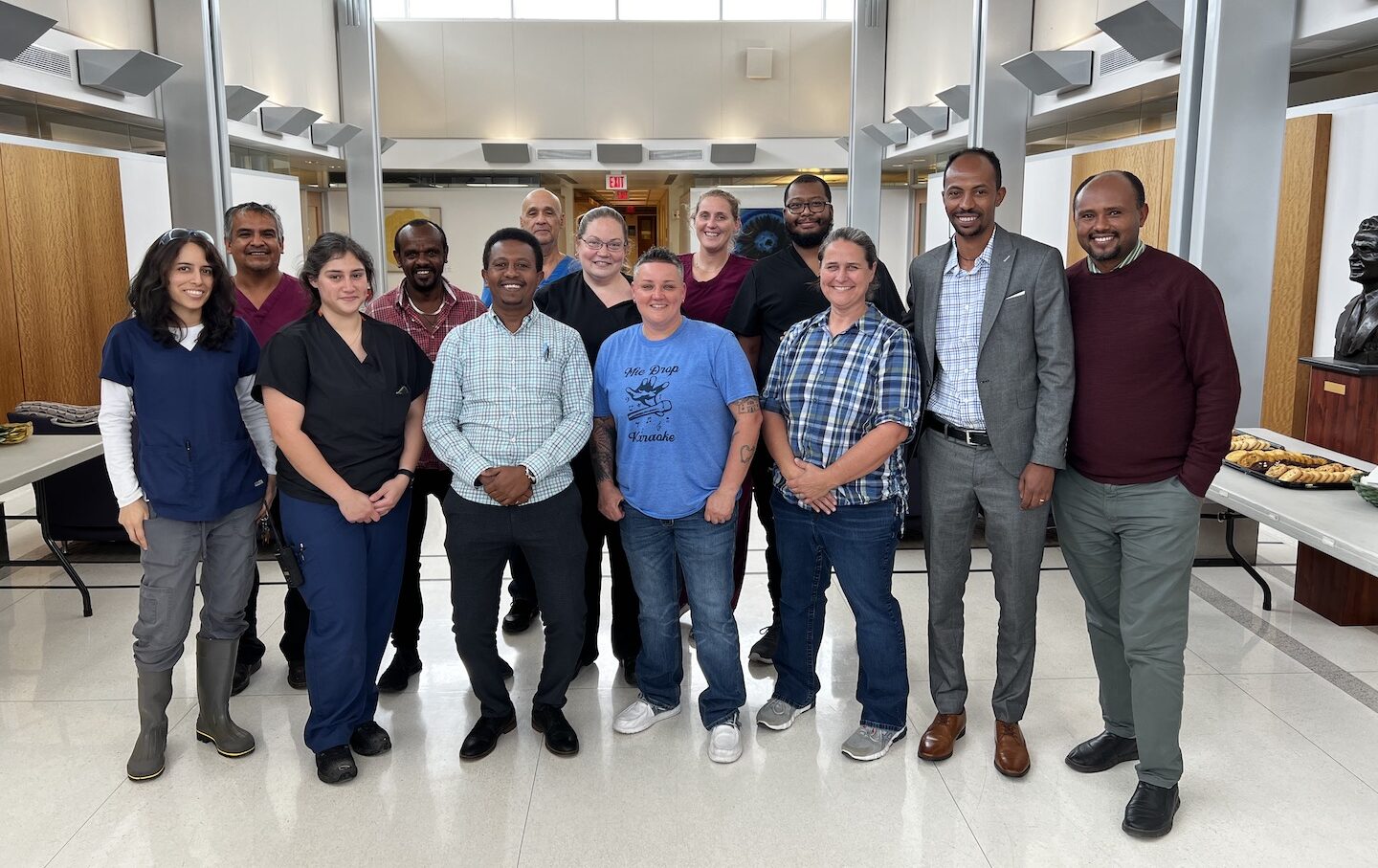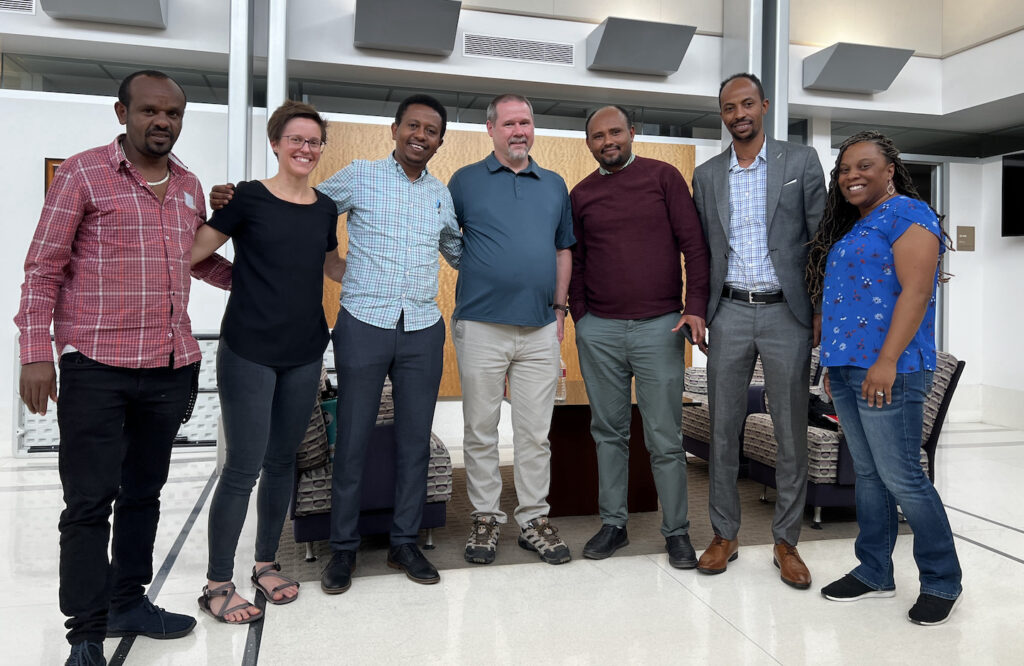Tackling Guinea worm disease in Ethiopia, together

Texas Biomed has joined a unique public health collaboration with The Carter Center aimed at eradicating the painful parasitic disease caused by Guinea worm in Ethiopia.
The decades-long effort to wipe out Guinea worm disease in humans has been nearing success, thanks in large part to the efforts of community health workers and the global humanitarian center founded by former President Jimmy Carter. But in Ethiopia, infections discovered in wild baboons have created the need for increased disease surveillance to better track and understand transmission. The worms that infect animals are the same species that infect humans, so eradication requires stopping infections in both.
Because of its 1,000 baboons — the largest such research colony in the world— Texas Biomed was selected to host representatives from the Ethiopian Public Health Institute and The Carter Center Ethiopia this past spring to train in evidence-based research and disease control. The team included wildlife veterinarians Drs. Fitsum Lemma, Desalegn Getahun and Endalkachew Birhanu, and Kassahun Demissie, a lab technician and national eradication program coordinator.
The team trained for a month at Southwest National Primate Research Center (SNPRC) based at Texas Biomed, learning surveillance and monitoring techniques. The skills will be of great use in the field — typically a heavily forested area of Ethiopia — where baboons and other animals are regularly checked for evidence of disease, says Fernando Torres-Velez, DVM, PhD, The Carter Center’s associate director for research in the Guinea Worm Eradication Program.
“Texas Biomed’s extensive experience and subject expertise has been a great asset as we continue deploying a surveillance system in Ethiopia’s Gambella region,” he says. “The trainings mean that Ethiopia will benefit from more robust technical capacity and further development of surveillance and research programs.”
Texas Biomed and SNPRC faculty and staff were proud to share their knowledge. All those involved, including The Carter Center, are exploring ways for the international exchange to continue through future travel and potential research collaborations.
“Texas Biomed is the only institute in the United States that could provide this baboon-focused, hands-on training,” says Professor Olga Gonzalez, DVM, a veterinary pathologist at SNPRC. “We hope to have a direct impact in efforts to eradicate this horrible disease and are excited about follow-up projects in the works.”
Laura Condel, a veterinary research supervisor at SNPRC, describes the relationships built as invaluable. “As much as they expressed that they learned from us, we learned just as much from them about the differences in the field and about ideas we could share to improve the work and care for animals,” she says.
Guinea worm disease is a debilitating condition that most often affects those living in poor communities. There is no drug to treat it and no vaccine for prevention.
People contract the parasite by drinking water containing microscopic fleas carrying Guinea worm larvae. They experience burning sensations and ulcers, and about a year later, a long worm erupts through the skin on the leg or foot. To alleviate the pain, people often seek relief in local water sources, which completes the parasite’s lifecycle.
Dr. Birhanu is optimistic that strategies learned at SNPRC will help overcome one of the last remaining impediments to eradicating Guinea worm disease in Ethiopia: baboons as reservoirs of infection.
“The trainings helped for the real situations in approaching wild baboons in a systematic way to understand their behavior and ecology,” he says.
Guinea worm disease is an important example of the complex interplay between animal and human health, and how research in animals is required to benefit both. This work can reveal how animals harbor pathogens and how to interrupt transmission between species. Animal models are also critical to understand infection processes involving many organ systems and to identify ways to prevent, treat and cure disease.

to exchange knowledge about disease monitoring and surveillance in baboons. From left to right:
Dr. Endalkachew Birhanu, Dr. Anna Goodroe, Dr. Fitsum Lemma, Dr. Jack Dutton, Kassahun Demissie,
Dr. Desalegn Getahun, Dr. Shannan Hall-Ursone